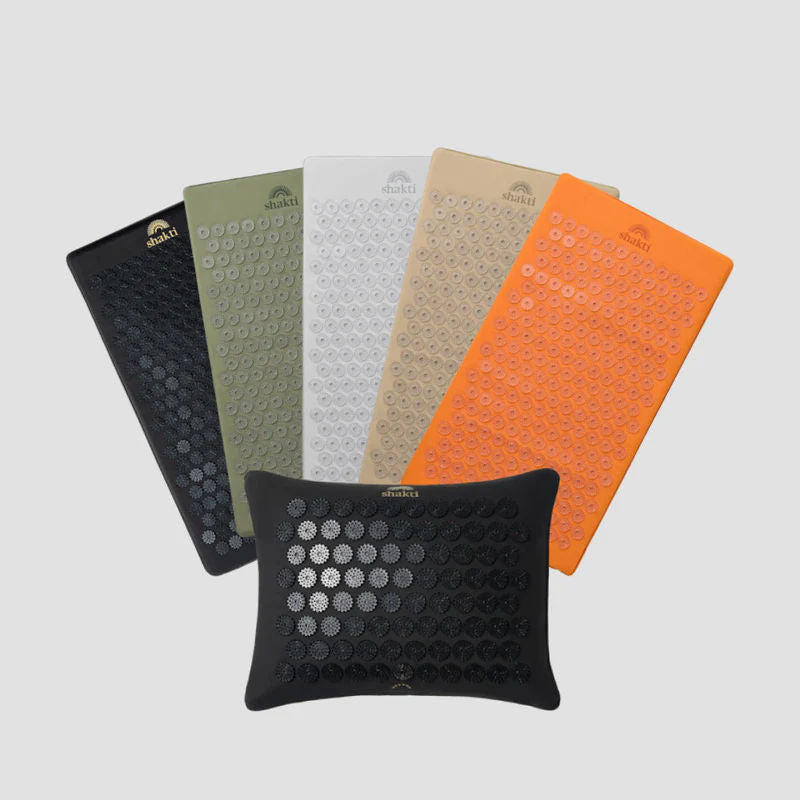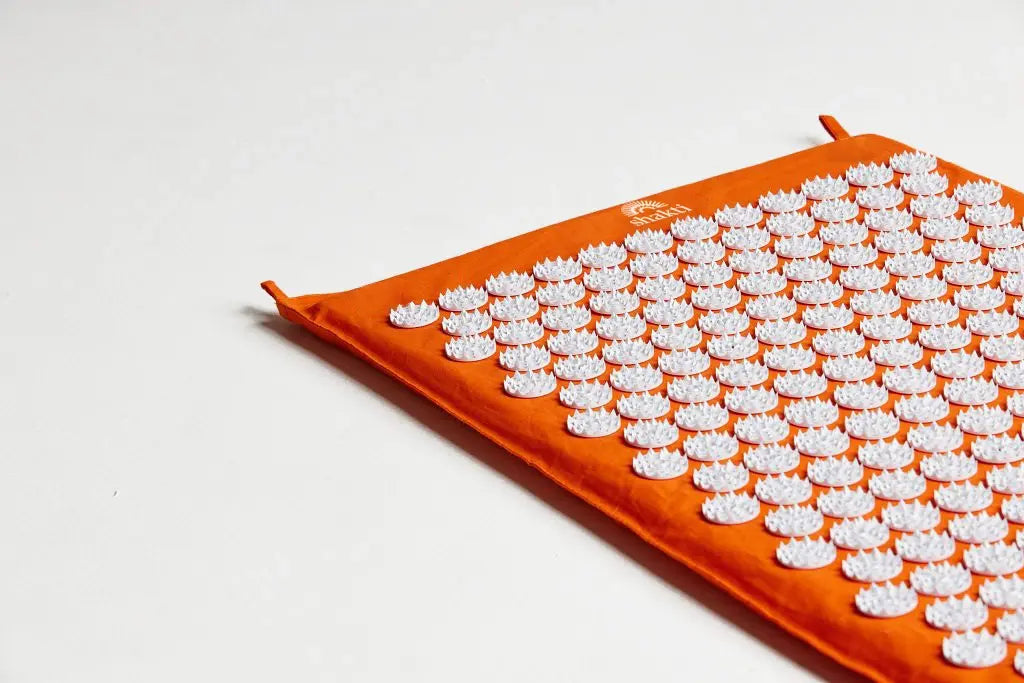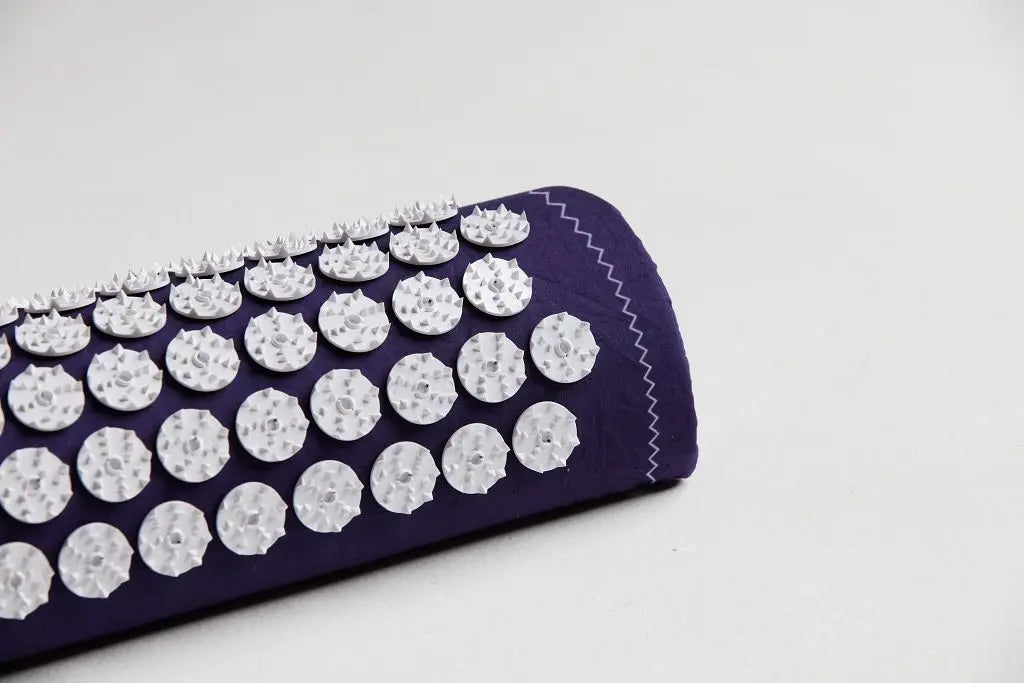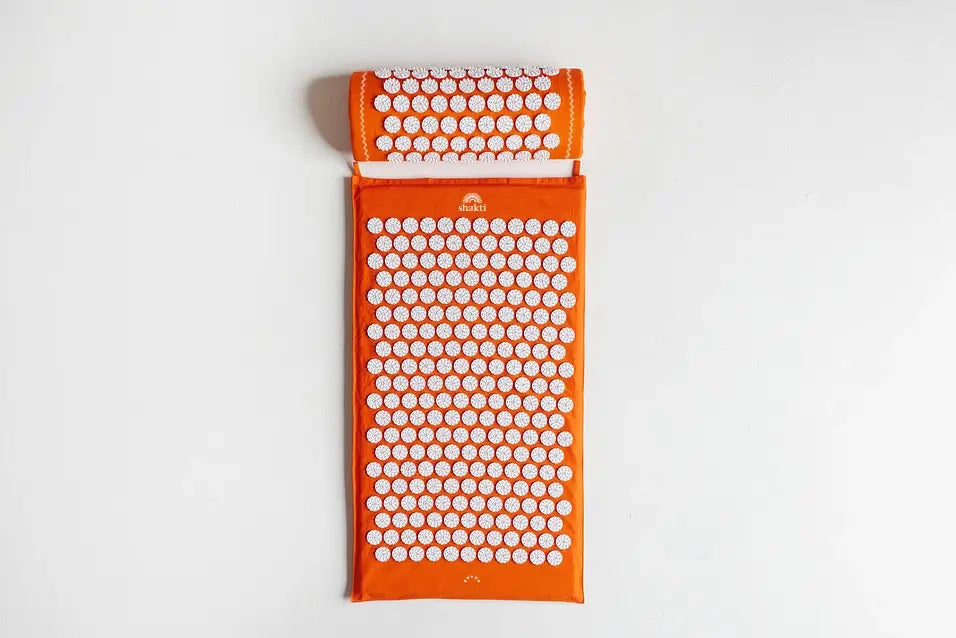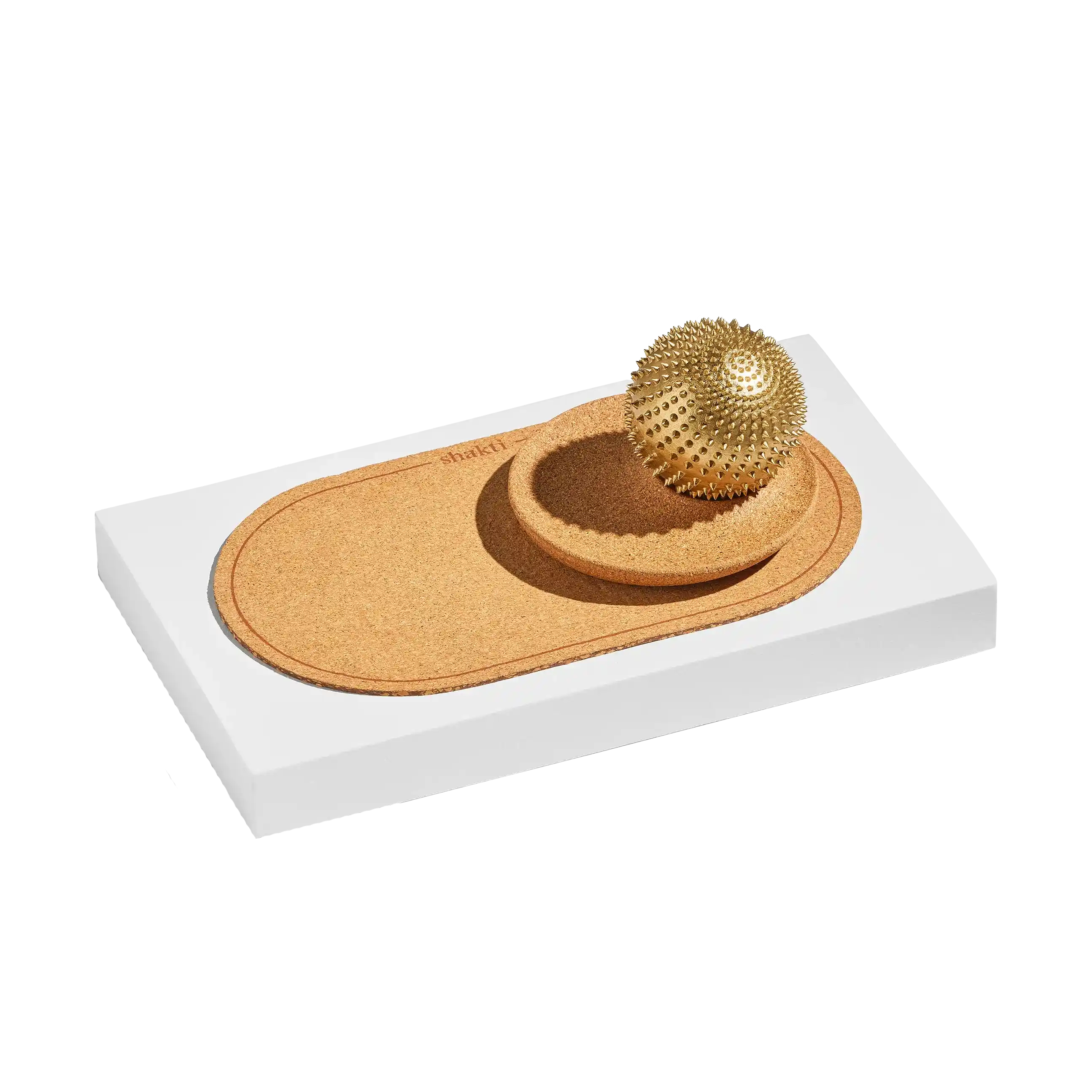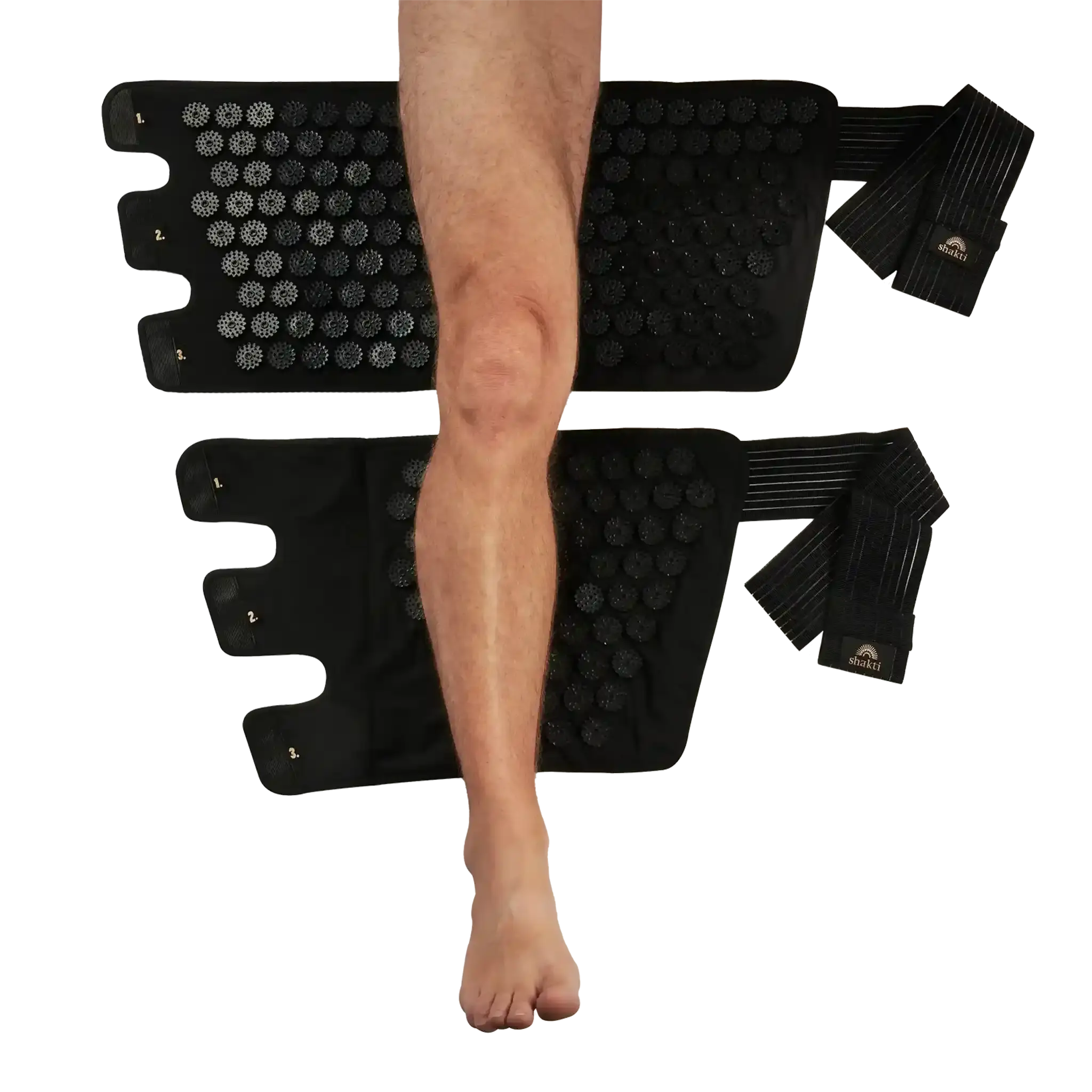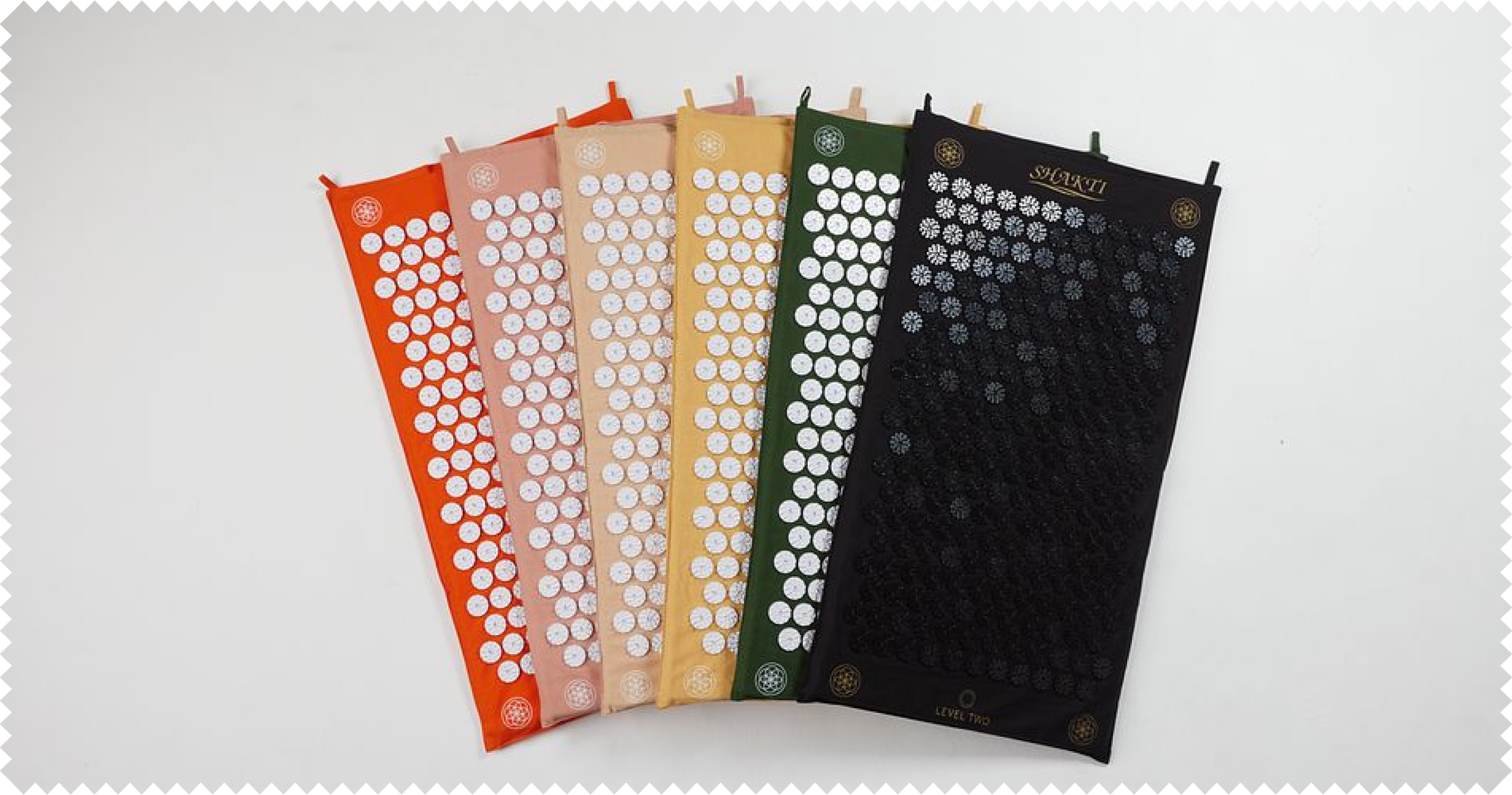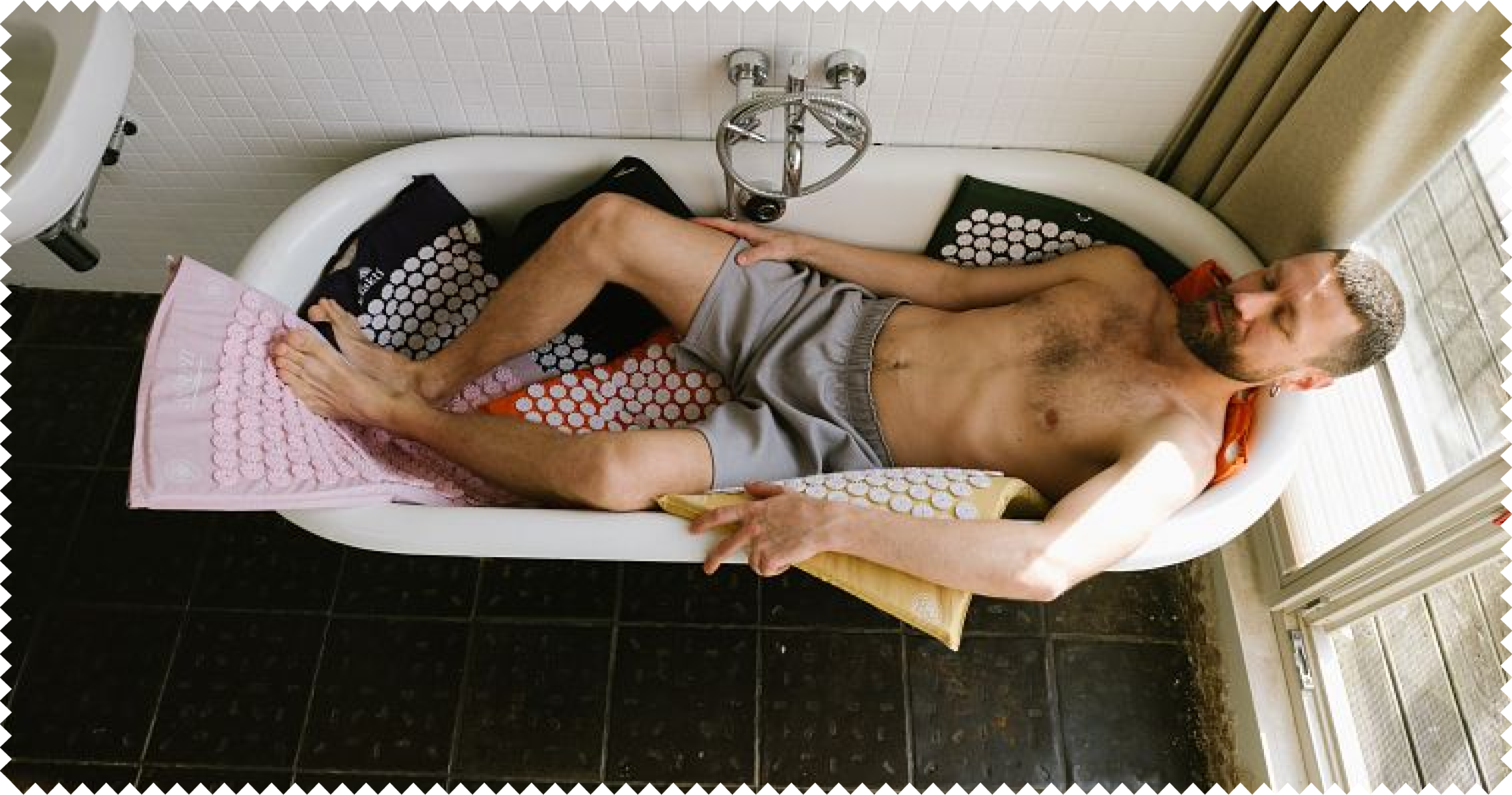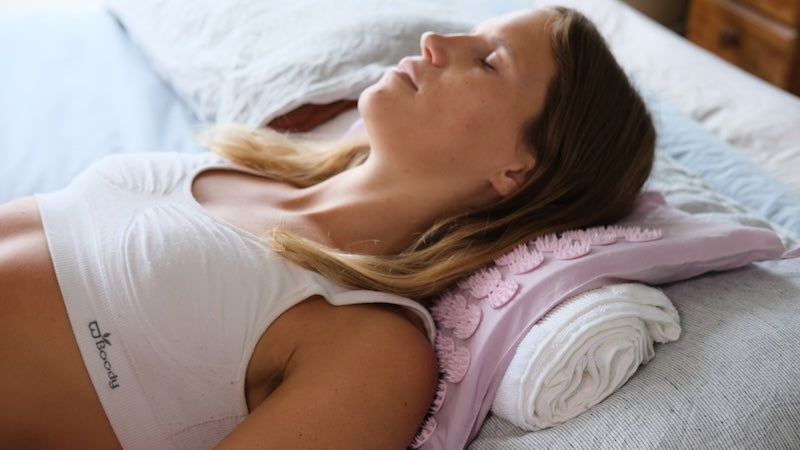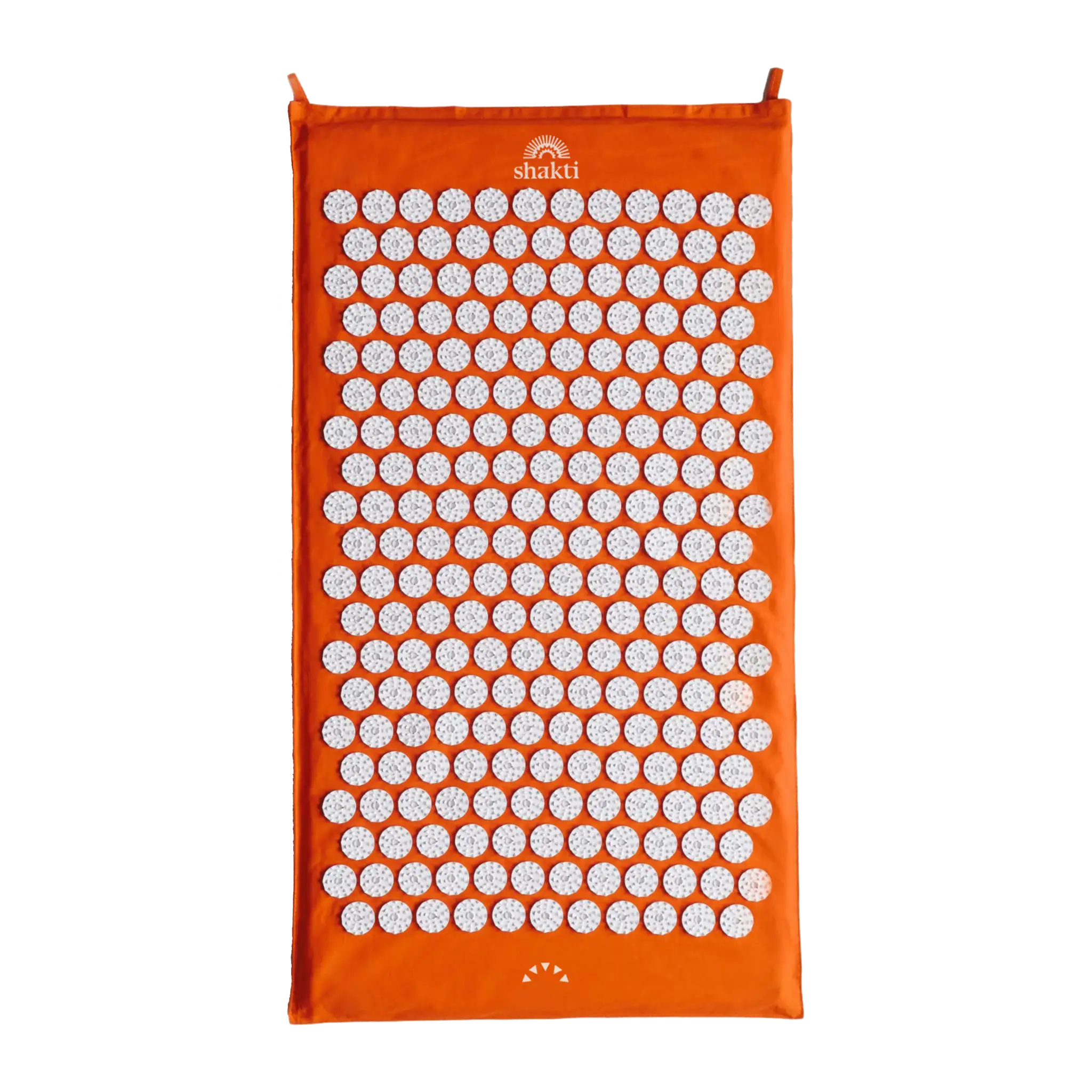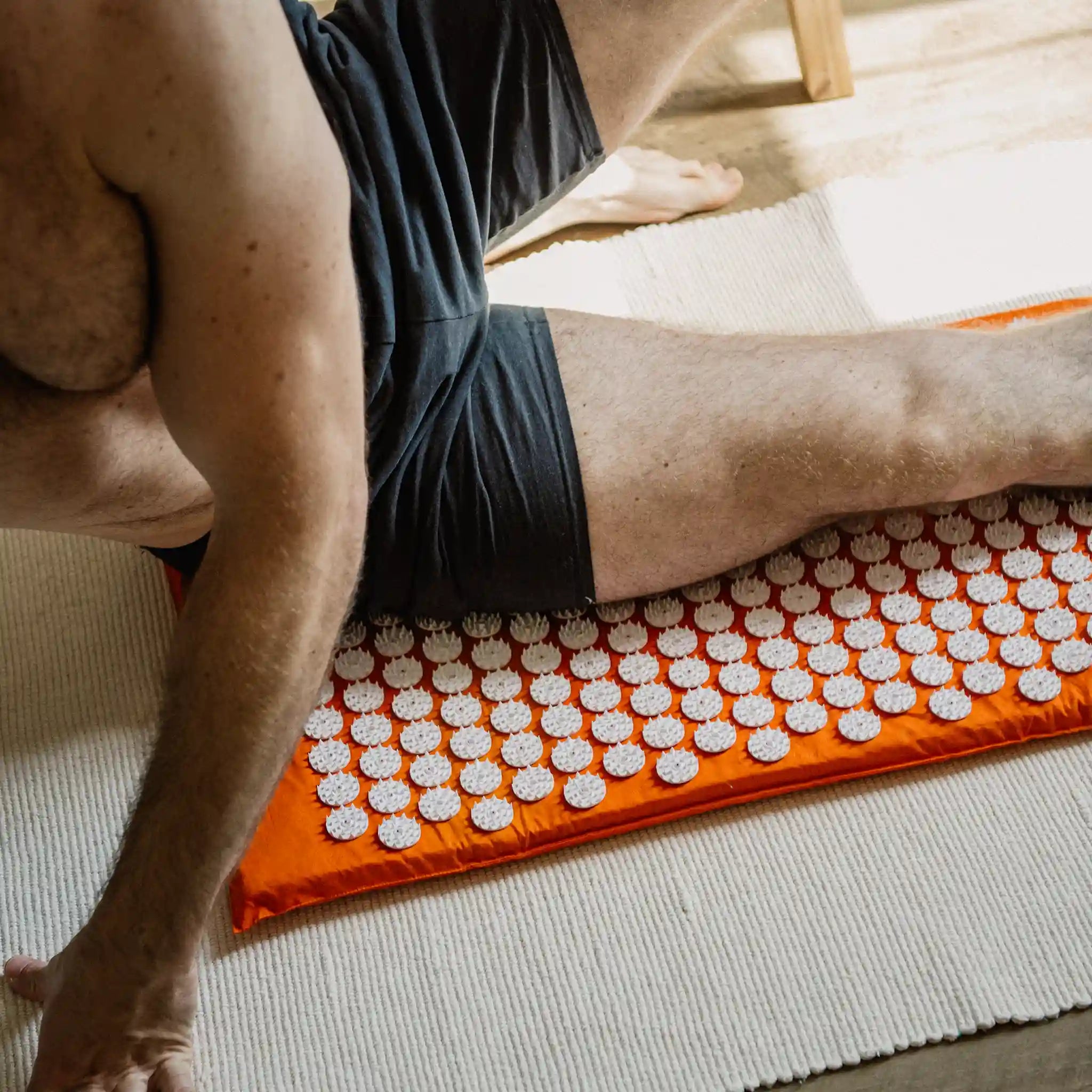Pain in the calf can affect anyone in the course of their life. Athletes often feel it after physical exertion. However, calf pain can also have many other causes and can be due to a magnesium deficiency, tension or incorrect strain, for example. The fact is: pain in the calf muscles is unpleasant and leads to restrictions in movement and sport. In this article, we want to give you a concise overview of possible causes of calf pain and answer this important question: Calf pain - what to do? We'll give you some exercises and tips on how to get a grip on constant calf pain.
Content
1. the calf: about the structure and function of the muscles
2. causes of pain in the calf: what can be behind it
3. localize calf pain: Where does it hurt?
4. calf pain after exercise is usually harmless
5. calf pain at rest: better to clarify the cause
6. calf pain during pregnancy: this is the cause
7 When should I see a doctor if I have calf pain?
8. what helps against calf pain?
9. relieve calf pain with acupressure
The calf: about the structure and function of the muscles
What we colloquially refer to as the "calf" is a muscle on the lower leg just below the back of the knee. The calf muscles have the important task of lifting the heel with the entire weight of the body when walking or jogging and thus initiating the rolling movement of the foot. The calf muscles themselves consist of many smaller muscles that work together when walking. Some calf muscles are also responsible for knee flexion. If the function of these muscles is disrupted at one point, the entire system can become unbalanced.
Causes of pain in the calf: This can be behind it
Calf pain is not a rare phenomenon and can take many forms. The pain can feel pulling, stabbing or sometimes even burning. The pain very often occurs after exercise, especially after running or cycling. The way in which the pain manifests itself and where it occurs allows conclusions to be drawn about the cause. You should therefore listen carefully to yourself when you feel pain and ask yourself: How does the pain feel?
-
Sudden sharp pain in the calf
A sudden sharp pain in the calf is an indication that the Achilles tendon is overloaded. A torn muscle fiber can also contribute to such pain symptoms. Torn muscle fibers occur particularly frequently in athletes. Sharp or stabbing pain in the thigh and calf is the main symptom of tears in the muscle fibers. -
Pulling in the calf
Does your calf hurt and feel like it is being pulled? In this case too, a torn muscle fiber may be the cause. Strains or a lack of magnesium can also lead to severe pain in the calf.
Ultimately, calf muscle pain can also be caused by a lack of movement and exercise. Do you often spend your time sitting down in everyday life or do you adopt an unhealthy posture at work? Then this can also lead to pain in almost all areas of the body.
Localize calf pain: Where does it hurt?
When looking for the cause of calf pain, it is important to localize it precisely. If pain in the calf occurs on one side, it is often caused by incorrect strain on the body or injury. It must also be checked by a doctor whether it could be a thrombosis. A pelvic misalignment can also cause pain in the calf.
More often, calf pain occurs on both sides and is then due to an overload of the legs. For example, if you start running again after a long break or make unaccustomed movements over a longer period of time, both legs will be overloaded equally. In rare cases, however, heart problems can also affect the calves on both sides. A cardiac insufficiency favors the development of painful swellings in the area of the legs - also called edema.

Calf pain after exercise is usually harmless
In most cases, pain in the calf occurs after a sports session or after unusual movements. Anyone helping with a move and carrying heavy boxes up and down the stairs during the day will feel this in their calf the next day at the latest. In most cases, such exertion causes a pulled muscle that goes away on its own.
-
Calf pain when running and climbing stairs
Movements such as climbing stairs or mountain climbing place particular strain on the Achilles tendon. The pain then extends up into the calf. -
Pain in the calf when walking
Calf pain when walking can be caused by previous muscle strains. A torn muscle fiber or hardening in the muscles can also be the cause. -
Calf pain when jogging
If the pain occurs during or after jogging, you should check your footwear. Although incorrect or excessive strain often triggers the pain symptoms, incorrect footwear without sufficient cushioning can cause pain in the calf after running training. -
Calf pain after getting up
Pain in the calf that occurs directly after getting up can indicate a magnesium deficiency. A deficiency of this mineral can promote the development of calf cramps.
Basically, calf pain after sports and exercise rarely has a serious cause or requires treatment. However, you should consult a doctor, especially if the pain is very severe or persists for a long time.
Calf pain at rest: better clarify the cause
Pain in the calf at rest can have a variety of causes, ranging from absolutely harmless to dangerous to health. Calf pain at rest on one or both sides should therefore always be clarified. If calf pain occurs while lying down, this is an indication of neurological problems such as a herniated disc. Pay attention to whether you feel other neurological abnormalities such as numbness or impaired mobility in your legs. Calf pain at night or while lying down is also a concern if you can no longer lift your leg above 45° without pain.
Watch for the signs of thrombosis
Calf pain can also be a sign of thrombosis, which is not to be joked about. However, if detected in time, it can be treated well and heal without consequences. But how does a thrombosis develop in the first place? Numerous processes in the body are involved in keeping blood clotting and blood flow in balance. A lack of exercise, frequent sitting or lying down for long periods (e.g. during a hospital stay) can cause this blood flow to stop. A blood clot forms, which impedes the blood supply and can even cause a complete vascular occlusion. It becomes dangerous if this clot breaks loose and penetrates the heart, lungs or brain.
You can recognize a thrombosis in the calf by the following signs:
- Severe pain in the leg/calf
- Swelling in the calf area with a feeling of heat
- Bluish discoloration
- Pain when stepping
- Different warm legs
If one or more of these symptoms occur, a doctor can act quickly and initiate appropriate treatment. In most cases, blood-thinning medications are used to dissolve the blood clot.
Calf pain during pregnancy: This is the cause
During pregnancy, the entire body literally gets out of balance. The hormones change and the body's center of gravity is also shifted. This alone favors pain, which is noticeable in very different places in the body. The hormones also often lead to water retention in the legs and corresponding pain.
An equally common problem during pregnancy is a magnesium deficiency. Magnesium is a vital mineral for the body, which is normally absorbed in sufficient quantities through the diet. During pregnancy in particular, however, the need for magnesium is correspondingly higher, as pregnancy hormones lead to increased excretion of the hormone. In most cases, the required amount can no longer be absorbed through the diet, so many doctors advise pregnant women to take dietary supplements.
Magnesium is responsible for the relaxation of muscles in the body. If this mineral is no longer present in sufficient quantities, then muscle tension or calf cramps can occur accordingly. These are particularly dangerous during pregnancy, as the uterus also consists largely of muscles. In the worst case, a magnesium deficiency can therefore promote premature labor.
When do I need to see a doctor for calf pain?
A visit to the doctor is essential for pain in the calf if it persists over a longer period of time and/or cannot be explained. If you have previously done intensive sport and it feels like sore muscles in your calves, then the causes of the pain are quite clear. If you have constant calf pain with no apparent cause, if it is persistent or frequently recurring, then a medical examination is advisable. A visit to the doctor is also advisable if the calf pain is accompanied by other symptoms such as fever or general malaise.
Is the calf swollen and hard? Then, too, medical clarification is necessary to rule out thrombosis. Sometimes, however, the causes are more harmless and are due to water retention. In the case of swollen calves, the doctor will examine you for liver and kidney diseases, which in very rare cases are also possible triggers for swelling and pain in the legs.

What helps against calf pain?
There are very different treatment options for calf pain, which must always be individually tailored to the cause and the symptoms. Sometimes it is enough to keep the leg still and cool or warm the calves. In other cases, such as thrombosis, medication is indispensable.
These are the best home remedies for sore calves
A painkiller does not always have to be used directly for pain. Home remedies have also proven effective in relieving the feeling of tightness in the calves. If a magnesium deficiency is the cause of cramps and pain in the calves, isotonic drinks or magnesium powder can help. Lightly massaging the calves with lavender or arnica oil can prove beneficial. A hot bath also relaxes the muscles. Warm or cold curd compresses have proven to be an old home remedy. All this helps to relax the muscles and can noticeably relieve pain in this area.
Calf pain: cooling or warming?
Heat or cold for pain - that is the crucial question. You can only effectively relieve pain if you choose the right remedy. But when does it make sense to reach for the hot water bottle and when should it rather be the cooling pad? To make the right decision, you need to know the cause of the pain.
Cooling is always advised if the pain is due to injuries such as strains or tension in the muscles. Cold leads to a constriction of the blood vessels and reduces blood flow. As a result, swelling and bruising cannot spread as easily. In addition, cold can also reduce inflammatory processes locally. However, always be careful not to cause frostbite on the skin. Heat has an opposite effect. It promotes the expansion of blood vessels and thus also blood circulation. As a result, the tissue is better supplied with nutrients and metabolic products can also be better removed from the body. Heat has a loosening effect on cramps and supports relaxation.
The best exercises for calf pain
There are some exercises that can help with sore muscles in the calves. Because the muscles in the calves are mainly responsible for stretching the foot, you can walk on toes to strengthen them. Just walking around the house on toes for a few minutes every day is enough to do this.
As an alternative to strengthening exercises, you can also repeatedly perform stretching exercises for pain in the calves. Muscular overload is often caused by a shortening of the muscles. Stretching exercises can loosen these shortenings. One stretching exercise that you can easily incorporate into your daily routine is to lunge forward with one leg, hold for a moment, and then do the same with the other leg.
Relieve calf pain through acupressure
Acupressure is an ancient healing method that can also be used for calf pain. The idea behind it: Ancient teachings describe meridians and energy pathways that run through the body. If these pathways are blocked, then illnesses and also pain can occur. Pain is therefore usually caused by a blockage. Accordingly, the goal is to remove blockages and restore the flow of energy.
Acupressure involves applying pressure to various areas of the body and stimulating the acupressure points in the body. This is intended to free the energy pathways in the body and relieve pain.
How does acupressure work for calf pain?
If you want to do something for yourself and your body on a regular basis, then it is worth buying your own acupressure mat. This can not only be used for pain, but also holistically stimulate blood circulation in your body. Many users are convinced that acupressure has helped them to achieve lasting pain relief.
You can either lie on the mat with your whole body or wrap it selectively around your calves. If you stand on the mat with bare feet, you will feel a warm sensation that can spread to the whole body and thus also to the respective pain points.
We will be happy to give you more tips on how to use the acupressure mat for calf pain.


